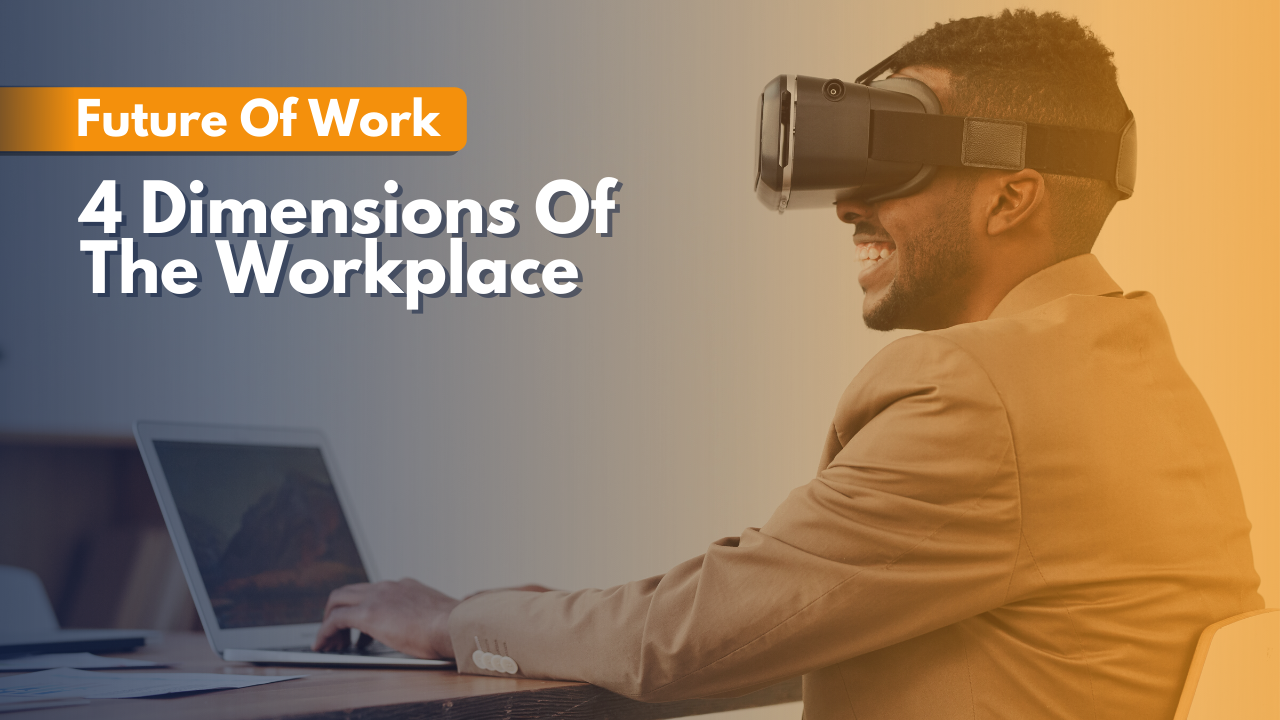- A new report, ‘Future of the Workplace 2030+’, explores how workplaces will change over the course of this decade.
- Meaningful workplaces that deliver value for organisations, individuals, and society will take center stage in the coming years.
- An underlying mentality in the future of work is change for the better, and this report expects a shift in mindset from “best in the world” to “best for the world”.
Unily and Kjaer Global recently published the report “Future of the Workplace 2030+”. The report aims to explore how the future of work and workplaces will unfold over the course of this decade.
“The future of work will be defined by personalised solutions, wellbeing and a focus on culture and inclusivity. Workplace learning will be as essential, and potentially also as natural, as breathing. Technology will augment people and organisations alike to open up pathways to improve employee experience and engagement – leading to greater productivity, creativity and innovation.”
The report identified one major challenge organisations will need to address: how to create social cohesion and engagement for an increasingly liquid and distributed workforce. Unily and Kjaer Global propose that the workplace will play a key role in overcoming this challenge.
Companies will be tasked with creating meaningful workplaces “that deliver value for organisations, individuals, and society alike.” In this sense, the report outlines 4 potential workplace dimensions that are likely to develop in the coming years.
1. The Emotional Workplace, which is concerned with culture, wellbeing, social capital, and trust.
2. The Physical Workplace, which is concerned with evolving roles and purpose.
3. The Technological Workplace, which is concerned with how technology will foster new business models.
4. The Purposeful Workplace, which is concerned with ideas of leadership, organisational models, company values, and employee engagement.
By 2030 workplaces are likely to have changed dramatically. According to the report, “workplaces will be defined by personalised solutions, wellbeing, and a focus on culture, autonomy, and inclusivity.”
But how exactly will this happen as work is increasingly untied from space and time?
The answer is: through engaging workplaces that are able to weave together the physical and digital realms of work and the workforce.
The Future Workplace: 4 Key Dimensions
The Emotional Workplace
Because work is increasingly untied from space and time, culture has become a top priority for leadership to engage office and remote workers alike.
“This requires consistent vision and behaviours, along with clear communication of the values and traditions that underpin the organisation.”
As companies place a higher value on culture, they have enabled new work patterns — shorter workdays, flexible schedules — which benefit wellbeing, productivity, and engagement, as well as diversity and inclusion efforts.
The workplace must, therefore, adapt to these unconventional working schedules and patterns. It will also need to recognise the lifestyles and responsibilities of a multi-generational and diverse workforce.
Technology will play an important role in enabling the emotional workplace by offering “real-time feedback on wellness and healthy work practices — suggesting breaks, tailoring nutritional boosts to job roles and offering guided workouts or meditation.”
Beyond providing feedback and encouraging healthier work practices, technology will play a key role in social aspects of work. The right tech infrastructure will enable community-building and collaboration “by providing the right platforms for sharing, interaction, and innovating” — regardless of whether people work from home, the office, a cafe, or a hotel.
While technology will play a key role, the heart of the emotional workplace is human.
Organisations will need to take an active role in ensuring the financial wellbeing and stability of their human capital. This requires that organisations concern themselves with preparing their employees for the changes expected to come in the future. A key element of the emotional workplace, therefore, is ensuring that workers have access to reskilling and lifelong learning opportunities, as it will enable them to keep pace with new job roles as they emerge.
The Physical Workplace
The main takeaway from this dimension is that the “head office has moved from statement of corporate power to social hub for cultural cohesion and values sharing.”
Workplace design will increasingly reflect this change over the coming decade.
“The future smart office creates spaces that are optimised for wellbeing, sustainability and productivity. IoT, beacons and sensors automate the regulation and efficiency of everything from parking spaces to energy use.”
Some smart features that are likely to be implemented in the coming years include self-cleaning desks, smart textiles that change colors to match mood or task, and chairs that tell users when it’s time to get up and move around.
An important component of the physical workplace will be the deployment of AR and VR technologies as ideation tools. These tools can not only be used to spur creativity and innovation, but they can also be used to provide employees with the right physical environment, making the workplace an even more agile environment.
For example, a worker might need an environment that’s more quiet or relaxed; if all rooms are booked or if the workplace doesn’t offer a space that meets his or her needs, then AR and VR can be used to create that space. The same can be said if an employee wishes to take a nap or needs a space to nurture creative skills.
The physical workplace will also need to recognise that design plays a key role in how people connect and interact with one another.
Beyond design and layout, organisations will need to implement platforms that make it easy for coworkers to reach out and connect with one another. “Think of this as a marketplace for peers to buy or trade learning or take on the execution of an idea, building on the collective wealth of knowledge and skills.” Such platforms are already being deployed by companies across industries (coworking spaces have platforms where members can find information about each other, many events and conferences are using such platforms to make it easier for attendees to connect and mingle, etc.)
The Technological Workplace
Technology is one of the main drivers behind new business models and jobs. Therefore a technological dimension to the workplace is a requirement for the future.
“The technological workplace is an empowering partnership between people and tech, bringing out the best of both, where the sum is greater than its parts.”
Basically, the technological workplace is a space that will enhance and augment human capabilities. It’s a workplace that will enable people to think and do by supporting them through technologies such as digital assistants, artificial intelligence, machine learning, and the like — AKA the digital workforce.
AR and VR technologies will also play a key role in this dimension as these can offer “pathways to blend physical and digital experiences in meaningful ways,” providing the opportunity for workers to perform better and be more innovative and creative.
An important part of the technological workplace is learnability. Learning, and ‘learning to learn’, will be a determining factor in the future workplace, and those who are able to learn continuously will be better prepared for a future where the majority of jobs don’t yet exist.
The Purposeful Workplace
Purpose is the new black. This is not likely to change in the coming decade, particularly because “by 2030 Gen Z will be an influential part of the workforce and their defining behaviour is the search for meaning. They demand that organisations ‘walk the talk’.”
Organisations can no longer simply focus on revenue and profit, but they must also account for their social and environmental impact, as well as the health and education of their employees.
The report defines purpose as “developing a shared understanding of what we are here to achieve – the vision and values that underpin the organisation.”
Purpose-driven organisations will not only have a more engaged workforce, but they will also perform better and have higher levels of innovation.
An underlying requirement to create a purpose-driven organisation is to have visionary leaders that believe that betterness is good business. It requires a change in mentality from “best in the world” to “best for the world.”


 Dr. Gleb Tsipursky – The Office Whisperer
Dr. Gleb Tsipursky – The Office Whisperer Nirit Cohen – WorkFutures
Nirit Cohen – WorkFutures Angela Howard – Culture Expert
Angela Howard – Culture Expert Drew Jones – Design & Innovation
Drew Jones – Design & Innovation Jonathan Price – CRE & Flex Expert
Jonathan Price – CRE & Flex Expert














